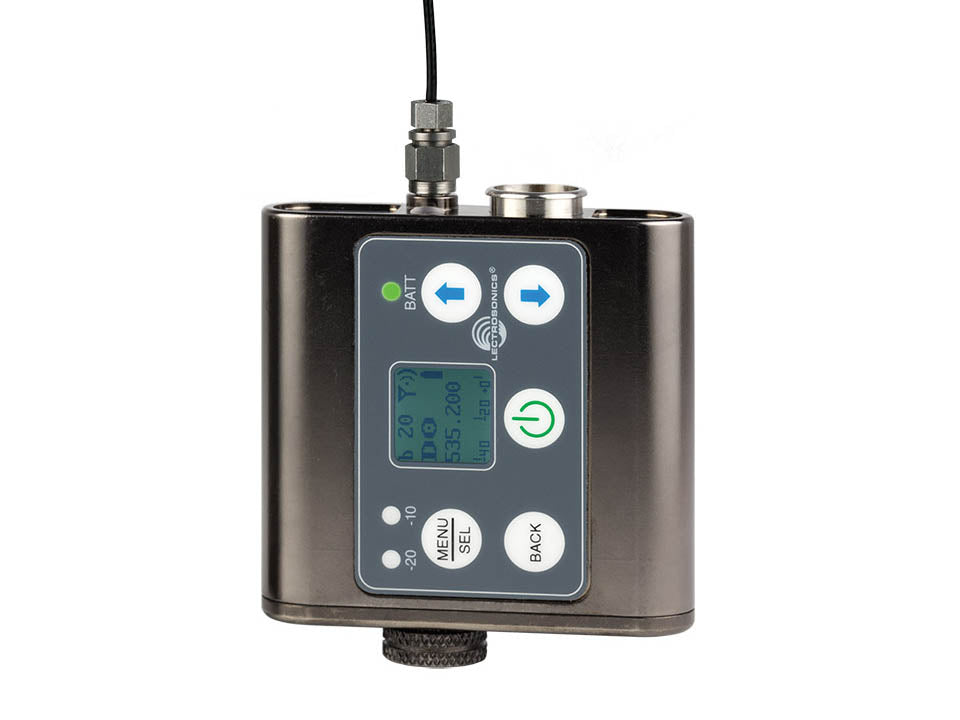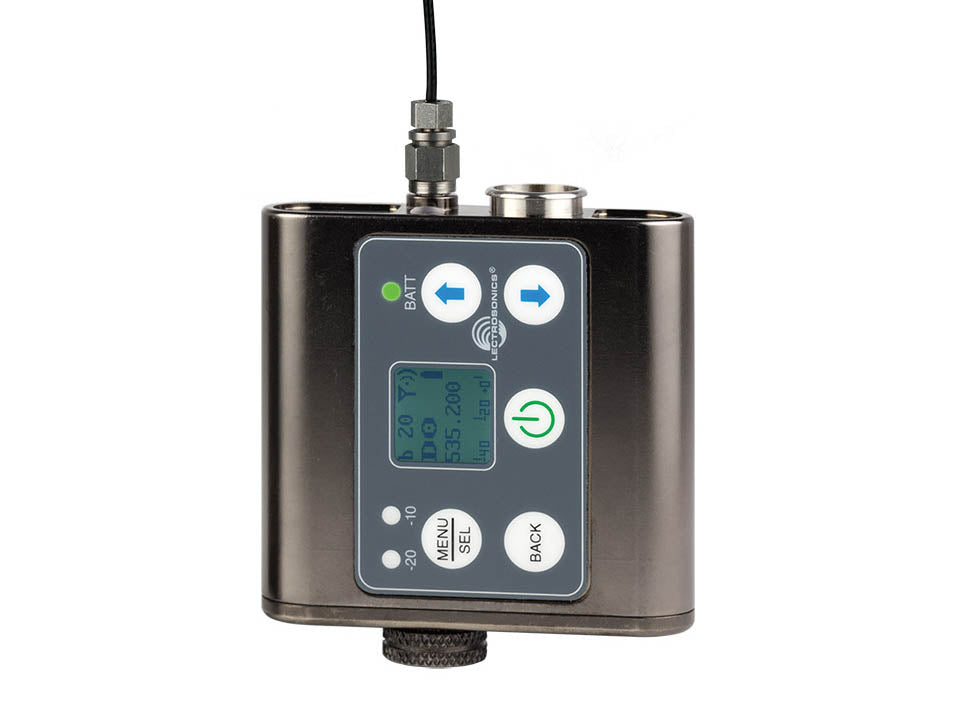Lectrosonics
SMDWB/E01 - Wideband Bodypack Transmitter
SMDWB/E01 - Wideband Bodypack Transmitter
excl. VAT
Ready to ship in 14 days
Item number: A00433
Couldn't load pickup availability
Lectrosonics is introducing two new transmitters as the latest generation in the award-winning Digital Hybrid Wireless® SM Series product line: the “wide band” SMWB (single AA battery) and SMDWB (dual AA battery). These new transmitters have a similar look and feel to previous SM Series units, but with several important new features, including the ability to either act as a transmitter or as a body-worn recorder, and wideband tuning.
Similar to other current Lectrosonics transmitters, the SMWB and SMDWB units tune across 3 standard frequency blocks and come in several frequency ranges: A1 (470 – 537 MHz) and B1 (537 – 614 MHz) for the North American and export markets, and B2 (563 – 640 MHz) and C1 (614 – 691 MHz) for certain export markets. RF power for these models is selectable at 100, 50, or 25 mW (North American version) and 50 or 25 mW (certain export markets). The SMWB and SMDWB feature the standard TA5 connector with servo-bias mic input. This input is also found on all previous SM Series units and all current TA5 beltpack units like the LT and LMb. Any lavaliere microphones wired for these other Lectrosonics transmitters will work on the new models.
The SMWB and SMDWB units can be configured as either a transmitter or a recorder, with files stored on Micro SD card memory, allowing use as body worn recorders. The audio files are recorded in the industry standard Broadcast Wave (.WAV) format at 24 bits, 44.1 kHz sample rate. The Micro SD memory card can also be used to update firmware in the field.
The SMWB and SMDWB also feature the same larger, backlit LCD found on other recent Lectrosonics transmitters such as the LT, HHa, LMb and DBa. In addition, an IR port is included to allow for quick setup when using any IR equipped receiver such as the LR, SRc or Venue 2. This allows for easy integration with a larger wireless system using Wireless Designer™ software for frequency management and system monitoring.


